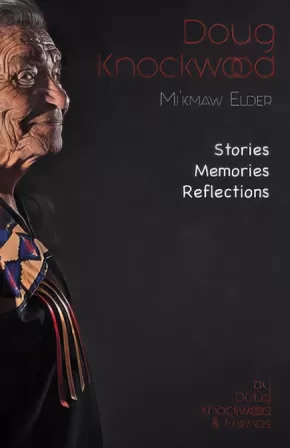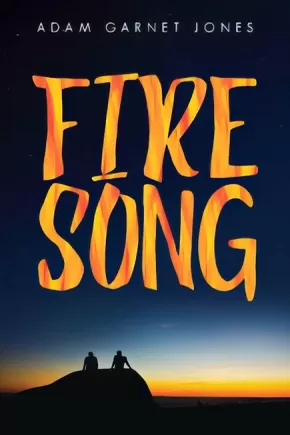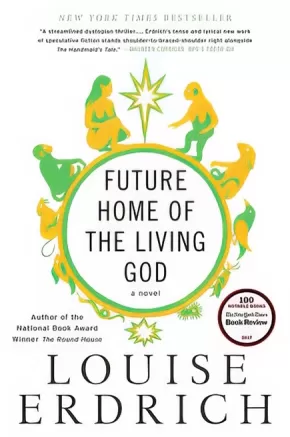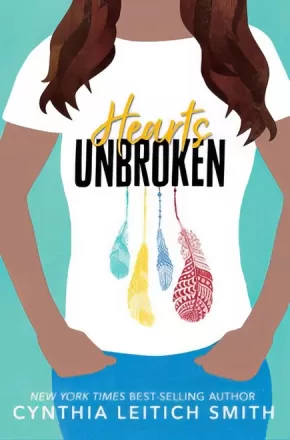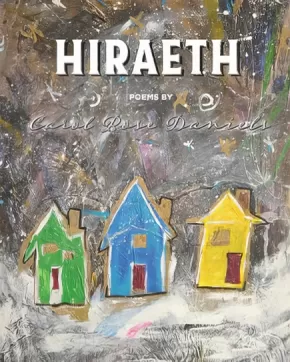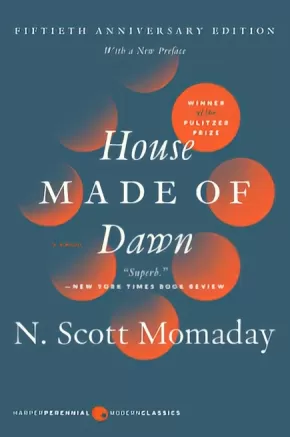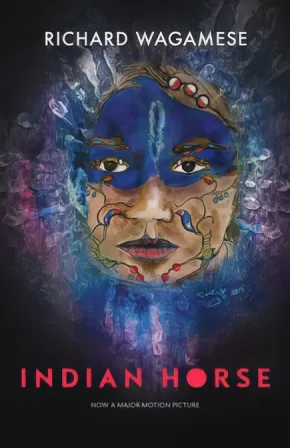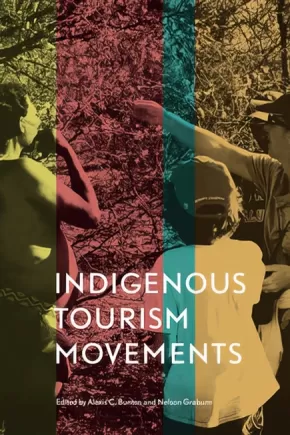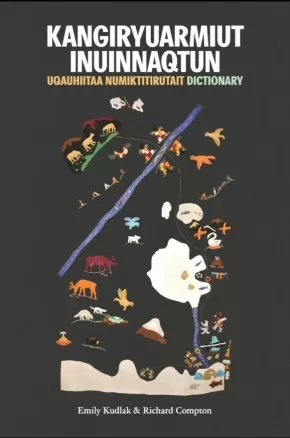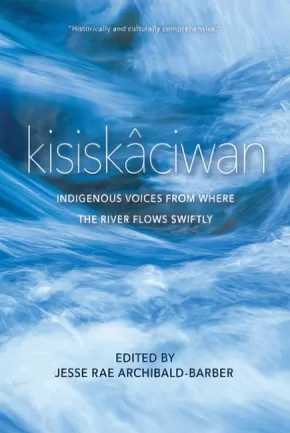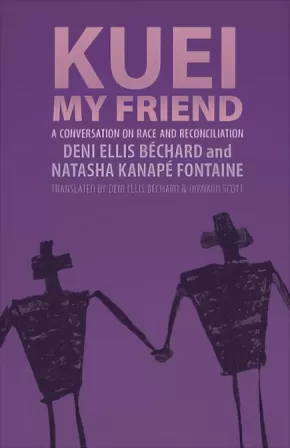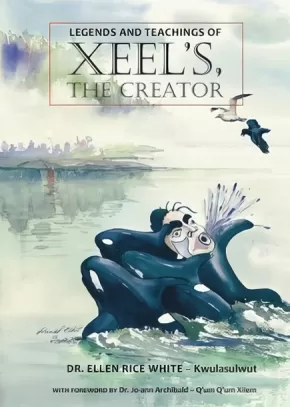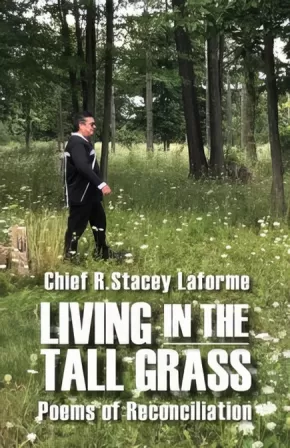Indigenous Peoples
Synopsis:
Freeman Douglas Knockwood is a highly respected Elder in Mi’kmaw Territory and one of Canada’s premier addictions recovery counsellors. The story of his life is one of unimaginable colonial trauma, recovery and hope.
At age 6, Knockwood was placed in the Shubenacadie Residential School, where he remained for a year and a half. Like hundreds of other Mi’kmaw and Maliseet children, he suffered horrible abuse. By the time he reached his twenties, he was an alcoholic. He contracted tuberculosis in the 1940s, had one lung and several ribs removed.
Having hit rock bottom, Knockwood, gained sobriety in his thirties through Alcoholics Anonymous. He went on to become a much sought after drug and alcohol rehabilitation counsellor in Canada. Many of Doug’s initiatives have been implemented across Canada and used by thousands of people, both Indigenous and non-Indigenous. Looking back now, says Doug, “I realize I wasn’t only helping them. They were helping me to gather strength in my presentations, in feeding them the knowledge I received, the same as it was fed to me. That helped me to gain confidence in myself; doing all these things that I didn’t know I could yet do”.
This book is an in-depth look at Doug Knockwood’s life that also casts a wide and critical glance at the forces that worked to undermine his existence and the indomitable spirit of a man who recovered from, yet still struggles to overcome, those forces.
Educator Information
The 2018-2019 Canadian Indigenous Books for Schools list recommends this resource for Grades 10-12 for these subjects: English Language Arts, Social Justice, Social Studies.
Additional Information
128 pages | 6.00" x 9.00" | Written by Doug Knockwood and Friends
Synopsis:
How can Shane reconcile his feelings for David with his desire for a better life?
Shane is still reeling from the suicide of his kid sister, Destiny. How could he have missed the fact that she was so sad? He tries to share his grief with his girlfriend, Tara, but she’s too concerned with her own needs to offer him much comfort. What he really wants is to be able to turn to the one person on the rez whom he loves—his friend, David.
Things go from bad to worse as Shane’s dream of going to university is shattered and his grieving mother withdraws from the world. Worst of all, he and David have to hide their relationship from everyone. Shane feels that his only chance of a better life is moving to Toronto, but David refuses to join him. When yet another tragedy strikes, the two boys have to make difficult choices about their future together.
With deep insight into the life of Indigenous people on the reserve, this book masterfully portrays how a community looks to the past for guidance and comfort while fearing a future of poverty and shame. Shane’s rocky road to finding himself takes many twists and turns, but ultimately ends with him on a path that doesn’t always offer easy answers, but one that leaves the reader optimistic about his fate.
Reviews
“Complex, vulnerable emotion is embedded within the specificity of the writing in this dramatic prose debut. Jones avoids clichés of reservation life, humanizing the stories of how his people reconcile the trauma of suicide, missing family members, same-sex relationships, and the isolation of a community left to fend for itself. A touching story that has been a long time coming for the Indigenous community.” — Kirkus Reviews
“This complex, well-written debut will resonate with young people . . . A great coming-out novel with Native American protagonists; recommended for all teen collections.”— Jill Baetiong, School Library Journal
“A powerful, challenging book that is full of deeply meaningful turns as it boldly encourages living life to the best of one’s abilities.”— Foreword Reviews
"A stunning debut. If you loved the movie Fire Song, get ready to swoon over this movie-to-novel adaptation. The tension, beauty, desperation, hunger for someone, hunger for yourself, a family at the crossroads and a highway that's calling--it's all here. Completely riveting. Completely compelling. Adam Garnet Jones, I would follow you and your characters anywhere. Bravo! A literary and unforgettable masterpiece."— Richard Van Camp, author of The Lesser Blessed
"Fire Song features an Indigenous youth struggling after the suicide of his sister and the lack of support he feels from the relationships with those closest to him. When the character's dreams of University are shattered, and his mother withdraws from the world with grief, we see that difficult decisions are to be made in hopes of an optimistic future." - The Dalai Lama Center
Educator Information
Recommended for Ages 14+ / Grades 9+
Novel Themes: LGBTQ, family relationships, suicide, friendships, acceptance, sexuality, secrets, stereotyping, siblings, diversity, teens, multigenerational, Indigenous.
The Canadian Indigenous Books for Schools list recommends this resource for Grades 10-12 for English Language Arts and Physical and Health Education.
Additional Information
232 pages | 5.50" x 8.25"
A hardcover copy of this book is also available on the Strong Nations website.
Synopsis:
Louise Erdrich, the New York Times bestselling, National Book Award-winning author of LaRose and The Round House, paints a startling portrait of a young woman fighting for her life and her unborn child against oppressive forces that manifest in the wake of a cataclysmic event.
The world as we know it is ending. Evolution has reversed itself, affecting every living creature on earth. Science cannot stop the world from running backwards, as woman after woman gives birth to infants that appear to be primitive species of humans. Twenty-six-year-old Cedar Hawk Songmaker, adopted daughter of a pair of big-hearted, open-minded Minneapolis liberals, is as disturbed and uncertain as the rest of America around her. But for Cedar, this change is profound and deeply personal. She is four months pregnant.
Though she wants to tell the adoptive parents who raised her from infancy, Cedar first feels compelled to find her birth mother, Mary Potts, an Ojibwe living on the reservation, to understand both her and her baby’s origins. As Cedar goes back to her own biological beginnings, society around her begins to disintegrate, fueled by a swelling panic about the end of humanity.
There are rumors of martial law, of Congress confining pregnant women. Of a registry, and rewards for those who turn these wanted women in. Flickering through the chaos are signs of increasing repression: a shaken Cedar witnesses a family wrenched apart when police violently drag a mother from her husband and child in a parking lot. The streets of her neighborhood have been renamed with Bible verses. A stranger answers the phone when she calls her adoptive parents, who have vanished without a trace. It will take all Cedar has to avoid the prying eyes of potential informants and keep her baby safe.
A chilling dystopian novel both provocative and prescient, Future Home of the Living God is a startlingly original work from one of our most acclaimed writers: a moving meditation on female agency, self-determination, biology, and natural rights that speaks to the troubling changes of our time.
Reviews
“Erdrich’s inclusiveness, her expansive vision of humanity surprises and pleases on every page…Erdrich’s virtuosity reminds me of an eagle in flight…Her wisdom blossoms from multicultural sources and is always inviting the reader in, in, to deeper understanding and identity.” — Hudson Review
“A streamlined dystopian thriller…Erdrich’s tense and lyrical new work of speculative fiction stands shoulder-to-braced-shoulder right alongside The Handmaid’s Tale.”— Maureen Corrigan, NPR’s Fresh Air
“Erdrich stuns again in Future Home of The Living God…She grounds her story in a kind of sharply drawn reality that makes the standard tropes of dark futurism that much more unnerving…Erdrich is a writer whose words carry a spiritual weight far beyond science, or fiction.”— Entertainment Weekly
“Erdrich is a seer, a visionary whose politics are inextricable from her fiction…[Future Home of the Living God] is an eerie masterpiece, a novel so prescient that though it conjures an alternate reality, it often provokes the feeling that, yes this is really happening.” — O, The Oprah Magazine
“In this fast-paced novel, rapid and catastrophic changes to human reproduction make the survival of the race uncertain…Erdrich imagines an America in which winter is a casualty of climate change, borders are sealed, men are ‘militantly insecure,’ and women’s freedom is evaporating…Vivid…Compelling.”— New Yorker
Additional Information
288 pages | 5.31" x 8.00" | Paperback
Synopsis:
New York Times best-selling author Cynthia Leitich Smith turns to realistic fiction with the thoughtful story of a Native teen navigating the complicated, confusing waters of high school — and first love.
When Louise Wolfe’s first real boyfriend mocks and disrespects Native people in front of her, she breaks things off and dumps him over e-mail. It’s her senior year, anyway, and she’d rather spend her time with her family and friends and working on the school newspaper. The editors pair her up with Joey Kairouz, the ambitious new photojournalist, and in no time the paper’s staff find themselves with a major story to cover: the school musical director’s inclusive approach to casting The Wizard of Oz has been provoking backlash in their mostly white, middle-class Kansas town. From the newly formed Parents Against Revisionist Theater to anonymous threats, long-held prejudices are being laid bare and hostilities are spreading against teachers, parents, and students — especially the cast members at the center of the controversy, including Lou’s little brother, who’s playing the Tin Man. As tensions mount at school, so does a romance between Lou and Joey — but as she’s learned, “dating while Native” can be difficult. In trying to protect her own heart, will Lou break Joey’s?
Awards
- American Indian Youth Literature Award Winner
Reviews
"Blending teen romance with complex questions of identity, equality, and censorship, this is an excellent choice for most collections." — School Library Journal (starred review)
"In a time when #ownvoices stories are rising in popularity among YA readers, this brings an insightful story to the conversation...this is truly a thought-provoking and educational novel." —Booklist
"Louise...is believable in her own missteps, and her younger brother’s moral quandary—he’s unsure if he wants to stay in the play after finding out about L. Frank Baum’s virulent anti-Native prejudice—is compellingly explored...a revealing account of a bigotry experience that sometimes gets overshadowed by others, though, and readers will sympathize with Louise’s frustrations." — Bulletin of the Center for Children's Books
"Smith depicts the Wolfes’ warm family life as a stable foundation as Hughie and Lou each confront challenges, and she is especially successful at portraying the camaraderie and conflicts of the newspaper staff...a thought-provoking work of realistic teen fiction." —Publishers Weekly Online
Educator Information
Recommended for ages 14+
Social themes: Prejudice and Racism, Dating, Romance.
Additional Information
304 pages | 5.81" x 8.56"
Synopsis:
Hiraeth is about women supporting and lending strength and clarity to other women so they know that moving forward is always possible-- and always necessary. It documents a journey of struggle that pertains to a dark point in Canadian history that few talk about and of which even fewer seem aware. Poems speak to the 1960's "scoop up" of children and how this affected the lives of (one or thousands) of First Nations and Métis girls-- girls who later grew to be women with questions, women with wounds, women who felt like they had no place to call home. That is, until they allowed themselves to be open to the courage others have lived and shared. "Hiraeth" is a word that is Celtic in origin and it means looking for a place to belong that never existed. But this place does exist -- in the heart.
Educator Information
The 2018-2019 Canadian Indigenous Books for Schools list recommends this resource for Grades 9-12 for English Language Arts and Social Studies.
Caution: some poems contain depictions of violence and racism and use strong language.
Additional Information
112 pages | 7.50" x 6.00"
Synopsis:
A special 50th anniversary edition of the magnificent Pulitzer Prize-winning novel from renowned Kiowa writer and poet N. Scott Momaday, with a new preface by the author.
A young Native American, Abel has come home from war to find himself caught between two worlds. The first is the world of his father’s, wedding him to the rhythm of the seasons, the harsh beauty of the land, and the ancient rites and traditions of his people. But the other world—modern, industrial America—pulls at Abel, demanding his loyalty, trying to claim his soul, and goading him into a destructive, compulsive cycle of depravity and disgust.
An American classic, House Made of Dawn is at once a tragic tale about the disabling effects of war and cultural separation, and a hopeful story of a stranger in his native land, finding his way back to all that is familiar and sacred.
Reviews
“Both a masterpiece about the universal human condition and a masterpiece of Native American literature. . . . A book everyone should read for the joy and emotion of the language it contains.” — The Paris Review
“A new romanticism, with a reverence for the land, a transcendent optimism, and a sense of mythic wholeness...Push[es] the secular mode of modern fiction into the sacred mode, a faith and recognition in the power of the world.” — American Literature
Additional Information
224 pages | 5.31" x 8.00"
Synopsis:
Indian Act is a tribute and thank you to those who survived the Indian Residential School system so that future generations could be free to pursue their lives unhindered by educationally enforced lowered expectations and institutionalized abuse. Plays by contemporary First Nations and Métis playwrights cover the broad scope of residential school experiences, all kinds of characters, and no stereotypes, giving voice to those who could not be heard.
Includes the plays:
Bunk #7 by Larry Guno
God and the Indian by Drew Hayden Taylor
They Know Not What They Do by Tara Began
A Very Polite Genocide or The Girl Who Fell to Earth by Melanie J. Murray
Kihew by Curtis Peeteetuce
Dear Mr. Buchwald by Yvette Nolan
Educator Information
Recommended resource for Grades 10-12 English Language Arts, Drama, and Acting.
Caution: Some plays contain mature subject matters and cover themes of substance abuse, sexual and physical violence, etc. Some plays are not appropriate for high school use and may be better suited for college-level courses.
Additional Information
392 pages | 6.00" x 9.00"
Synopsis:
Saul Indian Horse has hit bottom. His last binge almost killed him, and now he’s a reluctant resident in a treatment centre for alcoholics, surrounded by people he’s sure will never understand him. But Saul wants peace, and he grudgingly comes to see that he’ll find it only through telling his story. With him, readers embark on a journey back through the life he’s led as a northern Ojibway, with all its joys and sorrows.
With compassion and insight, author Richard Wagamese traces through his fictional characters the decline of a culture and a cultural way. For Saul, taken forcibly from the land and his family when he’s sent to residential school, salvation comes for a while through his incredible gifts as a hockey player. But in the harsh realities of 1960s Canada, he battles obdurate racism and the spirit-destroying effects of cultural alienation and displacement. Indian Horse unfolds against the bleak loveliness of northern Ontario, all rock, marsh, bog and cedar. Wagamese writes with a spare beauty, penetrating the heart of a remarkable Ojibway man.
Awards
- 2013 Burt Award for First Nations, Métis, and Inuit Literature
- 2013 First Nation Communities Read Award
Reviews
"Richard Wagamese is a master storyteller, who blends the throb of life with spiritual links to the land, hard work, and culture to find success, his words take you into the soul of Indian Horse, to experience his pain, his growing resentments, his depression, and his fear which has to be faced if he is to regain the joy of life. This book is meant for youth, adults, and elders, to be shared, to be lived, and to be treasured for the clear message of hope and the need to go the distance." — Wawatay News
“…The hockey chapters are compelling; they evoke Sherman Alexie’s fiction that examines contemporary life on American Indian reservations through the lens of basketball. But it is as a story of reconciliation that this novel reveals Wagamese’s masterful subtly…In a single image, Wagamese complicates in blinding ways the entire narrative; in a single page, Indian Horse deepens from an enjoyable read to a gripping critique of Canada.” — Kyle Carsten Wyatt, The Walrus, 2012
Educator Information
Grades 10-12 BC English First Peoples resource for units on Lost People, Reconciliation, and Place-Conscious Learning.
Caution: Substance Abuse, Mature Content
Additional Information
232 pages | 5.50" x 8.50"
This special edition of Richard Wagamese’s novel Indian Horse has been released to coincide with the release of the film Indian Horse in the spring of 2018.
Synopsis:
Indigenous perspectives much older than the nation itself shared through maps, artwork, history and culture.
The Royal Canadian Geographical Society, in partnership with Canada's national Indigenous organizations, has created a groundbreaking four-volume atlas that shares the experiences, perspectives, and histories of First Nations, Inuit and Métis peoples. It's an ambitious and unprecedented project inspired by the Truth and Reconciliation Commission's Calls to Action. Exploring themes of language, demographics, economy, environment and culture, with in-depth coverage of treaties and residential schools, these are stories of Canada's Indigenous Peoples, told in detailed maps and rich narratives.
This extraordinary project offers Canada a step on the path toward understanding.
The volumes contain more than 48 pages of reference maps, content from more than 50 Indigenous writers; hundreds of historical and contemporary photographs and a glossary of Indigenous terms, timelines, map of Indigenous languages, and frequently asked questions. All packaged together in a beautifully designed protective slipcase.
Educator Information
Recommended for ages 13+.
The Indigenous Peoples Atlas of Canada includes a four volume print atlas, an online atlas, an app, and more!
Additional Information
322 pages | 10.50" x 12.87"
Synopsis:
Cultural tourism is frequently marketed as an economic panacea for communities whose traditional ways of life have been compromised by the dominant societies by which they have been colonized. Indigenous communities in particular are responding to these opportunities in innovative ways that set them apart from their non-Indigenous predecessors and competitors.
Indigenous Tourism Movements explores Indigenous identity using “movement” as a metaphor, drawing on case studies from throughout the world including Botswana, Canada, Chile, Panama, Tanzania, and the United States.
Editors Alexis C.Bunten and Nelson Graburn, along with a diverse group of contributors, frame tourism as a critical lens to explore the shifting identity politics of Indigeneity in relation to heritage, global policy, and development. They juxtapose diverse expressions of identity – from the commodification of Indigenous culture to the performance of heritage for tourists – to illuminate the complex local, national, and transnational connections these expressions produce.
Indigenous Tourism Movements is a sophisticated, sensitive, and refreshingly frank examination of Indigeneity in the contemporary world.
Educator Information
TABLE OF CONTENTS
List of Figures
Notes on Contributors
Acknowledgments
Preface
1. Current Themes in Indigenous Tourism, Alexis Celeste Bunten and Nelson H.H. Graburn
PART 1: IDENTITY MOVEMENTS
1. Deriding Demand: A Case Study of Indigenous Imaginaries at an Australian Aboriginal Tourism Cultural Park, Alexis Celeste Bunten
2. The Masaai as paradoxical icons of tourism (im)mobility, Noel Salazar
3. The Alchemy of Tourism: From Stereotype and Marginalizing Discourse to Real in the Space of Tourist Performance, Karen Stocker
PART II: POLITICAL MOVEMENTS
1. Indigenous tourism as a transformative process: the case of the Embera in Panama, Dimitrios Theodossopoulos
2. San Cultural Tourism: Mobilizing Indigenous Agency in Botswana, Rachel Giraudo
3. The Commodification of Authenticity: Performing and Displaying Dogon Material Identity, Laurence Douny
PART III: KNOWLEDGE MOVEMENTS
1. Streams of Tourists: Navigating the Tourist Tides in Late 19th Century Southeast Alaska, Kathryn Bunn-Marcuse
2. Experiments in Inuit Tourism: The Eastern Canadian Arctic, Nelson H.H. Graburn
3. Beyond Neoliberalism and Nature: Territoriality, Relational Ontologies and Hybridity in a Tourism Initiative in Alto Bio Bio, Chile, Marcela Palomino-Schalscha
Epilogue
Reviews
"Indigenous Tourism Movements is a major contribution to research. It provides insightful case studies based on longitudinal, immersive field work that spans decades. Thoroughly informed by the relevant literature and theoretical insights, Indigenous Tourism Movements will be well received by academics and students of anthropology, geography, and cultural and tourism studies." - Anna Carr, Department of Tourism, University of Otago
Additional Information
288 pages | 6.00" x 9.00"
Synopsis:
The product of intensive, highly detailed work, this dictionary is more than a language document. It is a unique window into the Inuinnait culture and way of life.
Kangiryuarmiut Inuinnaqtun Uqauhiitaa Numiktitirutait - Kangiryuarmiut Inuinnaqtun Dictionary details the Kangiryuarmiut dialect of Inuinnaqtun, as spoken in the community of Ulukhaktok in the Inuvialuit Region of Canada's Northwest Territories. Very similar dialects of Inuinnaqtun are spoken in Qurluqtuq (Kugluktuk) and Iqaluktuuttiaq (Cambridge Bay) in Nunavut.
This is the most comprehensive dictionary of any Western Canadian dialect of the Inuit language. It contains over 5,000 Inuinnaqtun entries and subentries with their translations, over 3,000 example sentences, and a large inventory of suffixes.
The introduction includes a brief overview of Inuinnaqtun, its sound system, orthography, and major word classes. Main entries include both related subentries and examples. Suffix entries include information about lexical categories, inflection, the different forms a suffix may take, and examples of how each suffix is used.
Additional Information
582 pages | 6.50" x 9.50" | English, Inuinnaqtun
Synopsis:
This groundbreaking anthology from territory that is now Saskatchewan, kisiskâciwan, includes rich oral narratives from Cree, Saulteaux, Nakoda, Dakota, Dene, and Métis cultures; early writings from Cree missionaries; speeches and letters by Treaty Chiefs; stories from elders; archival discoveries; and contemporary literary works in all genres.
Historically and culturally comprehensive, voices include Big Bear, Thunderchild, Louis Riel, Gabriel Dumont, Edward Ahenakew, Maria Campbell, Buffy Sainte-Marie, Rita Bouvier, Harold Johnson, Gregory Scofield, Warren Cariou, Louise Halfe, and many more.
Educator Information
The collected works in this anthology would be useful for high school and college/university courses. All the works in this anthology are connected to Saskatchewan in some way. Some themes include Residential Schools, family, resilience, the Sixties Scoop, and coming of age.
Recommended resource for Grades 10-12 for these subjects: Drama, English Language Arts, Social Studies.
Caution: Some of the works in this anthology contain mature subject matter, such as discussion of abuse, violence, sexuality, etc.
Additional Information
300 pages | 6.00" x 9.00"
Authenticity Note: This work is labelled as containing Authentic Indigenous Text because of the contributions from Indigenous Peoples.
Synopsis:
Kuei, My Friend is an engaging book of letters: a literary and political encounter between Innu poet Natasha Kanapé Fontaine and Québécois-American novelist Deni Ellis Béchard. Choosing the epistolary form, they decided to engage together in a frank conversation about racism and reconciliation.
Intentionally positioned within the contexts of the Idle No More movement, Canada’s Truth and Reconciliation Commission, and the National Inquiry into Missing or Murdered Aboriginal Women and Girls, the letters in Kuei, My Friend pose questions in a reciprocal manner: how can we coexist if our common history involves collective and personal episodes of shame, injury, and anger? how can we counteract misunderstandings of the Other, which so often lead to contempt and rejection? how can we educate non-Indigenous communities about the impact of cultural genocide on the First Peoples and the invisible privileges resulting from historical modes of domination?
In an attempt to open a sincere and productive dialogue, Kanapé Fontaine and Ellis Béchard use their personal stories to understand words and behaviours that are racist or that result from racism. With the affection and intimacy of a friend writing to a friend, Natasha recounts to her addressee her discovery of the residential schools, her obsession with the Oka Crisis of 1990, and her life on the Pessamit reserve. Reciprocating, Deni talks about his father’s racism, the segregation of African-Americans and civil rights, and his identity as a Québécois living in the English-speaking world.
By sharing honestly even their most painful memories, these two writers offer an accessible, humanist book on the social bridge-building and respect for difference. Kuei, My Friend is accompanied by a chronology of events, a glossary of relevant terms in the Innu language, and, most importantly, a detailed teacher’s guide that includes topics of discussion, questions, and suggested reflections for examination in a classroom setting.
Educator Information
Recommended resource for Grades 10-12 in these areas: BC First Peoples, Contemporary Indigenous Studies, English First Peoples, English Studies, Literary Studies.
Includes an Innu-aimun glossary and a teacher's guide to help classroom discussion facilitation.
Recommended in the Canadian Indigenous Books for Schools 2019-2020 resource list as being useful for grades 10 to 12 for English Language Arts and Social Studies.
This resource is also available in French: Kuei, je te salue: Conversation sur le racisme.
Additional Information
176 pages | 6.21" x 8.46" | Translated by & Deni Ellis Béchard & Howard Scott
Synopsis:
Snuneymuxw Elder and storyteller Ellen White shares four stories handed down to her from her grandparents and their ancestors.
Legends and Teachings of Xeel’s, the Creator contains four short stories centering around themes such as communication, connection, teaching and respect. The stories featured include: “The Creator and the Flea Lady, The Boys Who Became a Killer Whale, The Sockeye That Became a Rainbow, and The Marriage of the Seagull and the Crow.” Each story is accompanied by a companion piece developed by the storyteller Ellen Rice White (Kwulasulwut) which provides cultural context and an explanation of some of the lessons found in each story.
In the story “The Creator and the Flea Lady”, a Flea mother asks for help saving her premature infant. The Flea woman is reminded of her connection to the many energies surrounding her by Xeel’s and the energies themselves.
In “Boys Who Became a Killer Whale”, eager learners frustrated with the pace and demeanour of their traditional teachers reach beyond what they know and encounter tragedy.
In both the “Sockeye That Became a Rainbow” and “The Marriage of the Seagull and the Crow”, respect and acceptance of the differences of others are central components of the stories. The protagonists struggle with their relationships and the differences they have with their partners.
Educator Information
Please Note: These are a set of uncensored, traditional stories. The content is meant to provide traditional teachings.
Each of the four stories in the book is accompanied by a discussion piece that provides cultural context and questions for the reader to consider. Huĺq̓ umín̓ um̓ language is used throughout. A glossary can be found at the back of the book.
Some subject matter may not be suitable for some readers.
Recommended in the Canadian Indigenous Books for Schools 2019-2020 resource list as being useful for grades 9 to 12 for English Language Arts.
Additional Information
112 pages | 6.75" x 9.75"
Synopsis:
“We should not have to change to fit into society the world should adapt to embrace our uniqueness.” -- Chief Stacey Laforme
In Living in the Tall Grass: Poems of Reconciliation, Chief Stacey Laforme gives a history of his Anishinaabe people through stories and poetry to let Canadians see through the eyes of Indigenous people. Living in the Tall Grass is written in a way that makes the reader feel he or she might be sitting down with Chief Laforme, sharing experiences from their lives. Some poems share humour, while others express pain, though each comes from the heart.
Reviews
"Laforme is a high-profile leader, attending scores of events, large and small in Ontario and gently reminding listeners that most of the southern part of the province is the traditional homelands of the Mississaugas of the New Credit. True to his belief in the longer-lasting impact of the arts, he’ll often open a speech with a verse. “The future lies in the arts, and it lies in all our youth, not just the Indigenous youth,” he says. “Arts make change … if we can share a moment through the arts whether its song, dance, poetry, painting, it transcends even language barriers." — Steve Milton, The Hamilton Spectator
Educator Information
Recommended for Grades 5-12 for English Language Arts.
Caution: Some poems touch on violence and suicide.
Themes: hope, the environment, Residential Schools.
Additional Information
160 pages | 5.50" x 8.50" | duotone photographs

